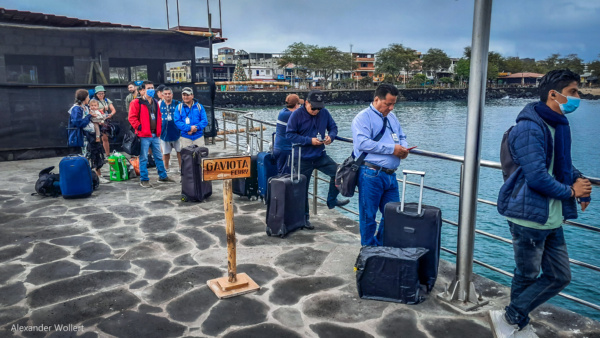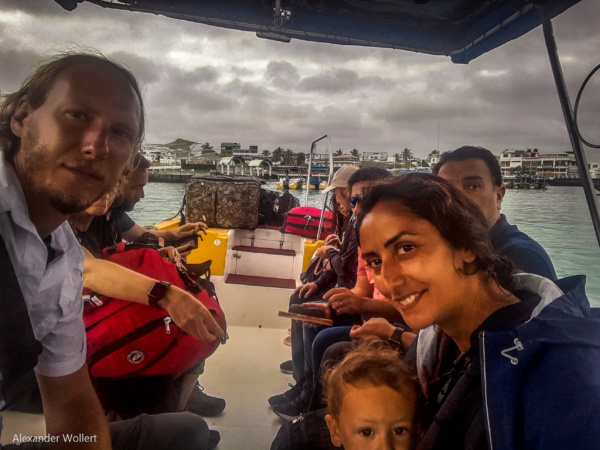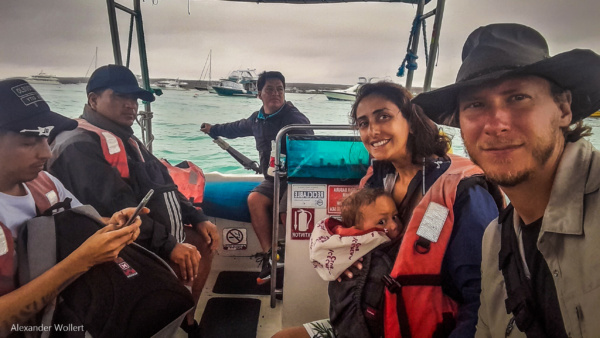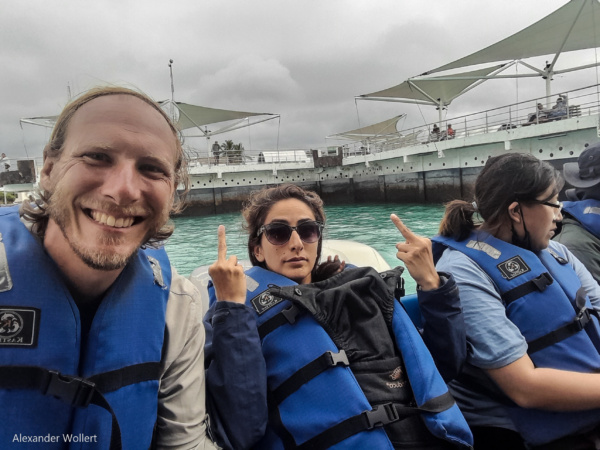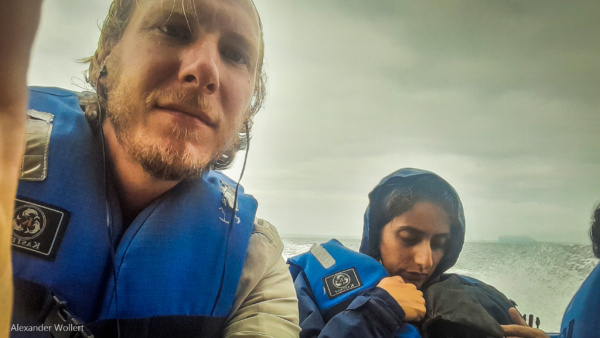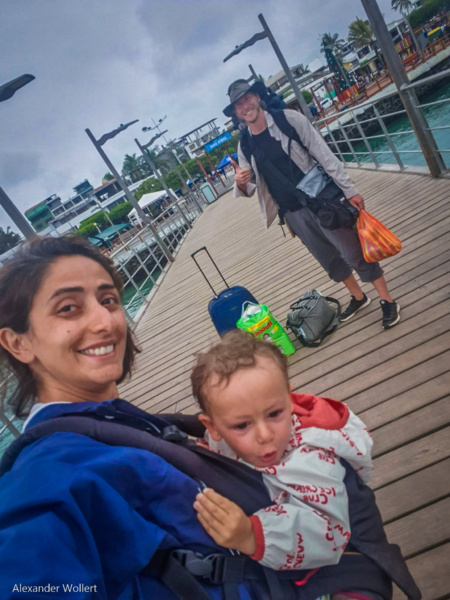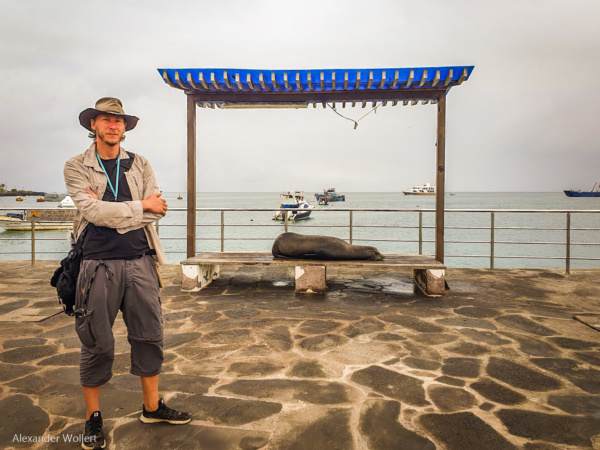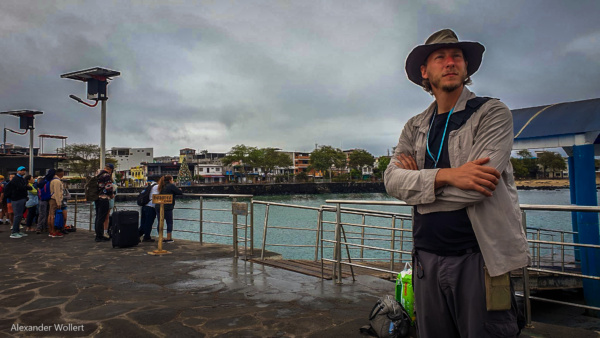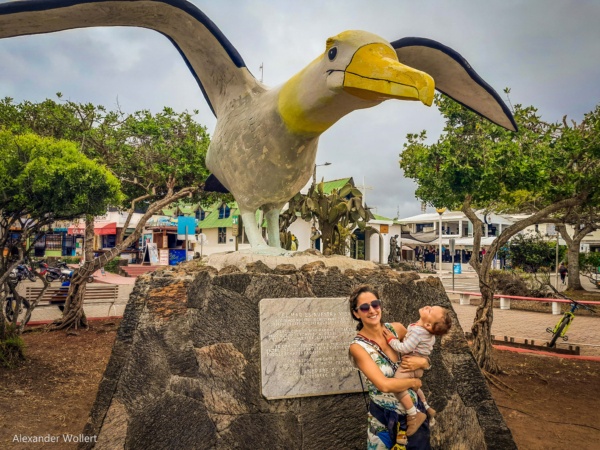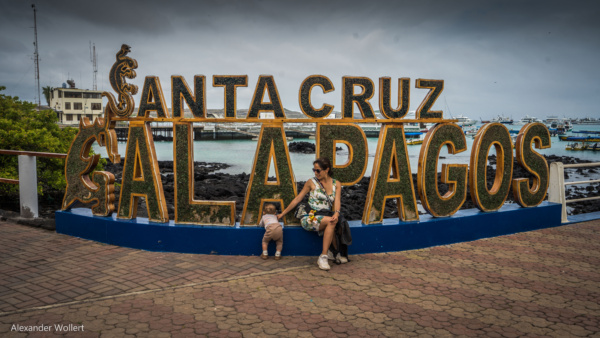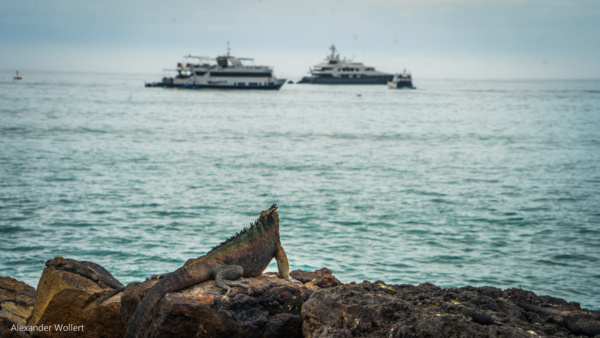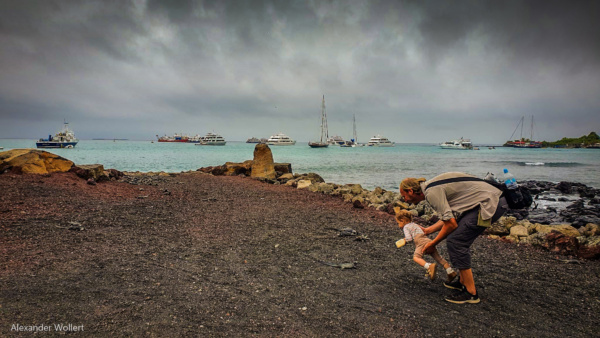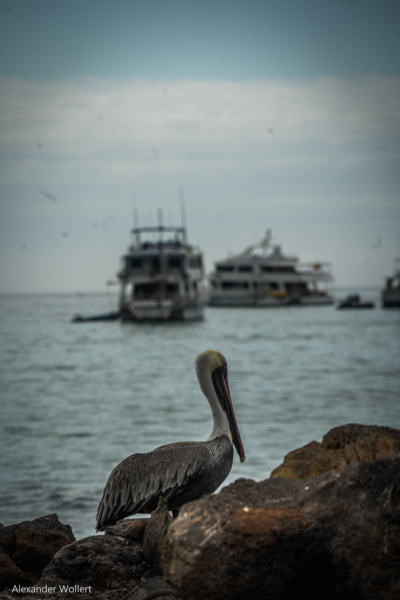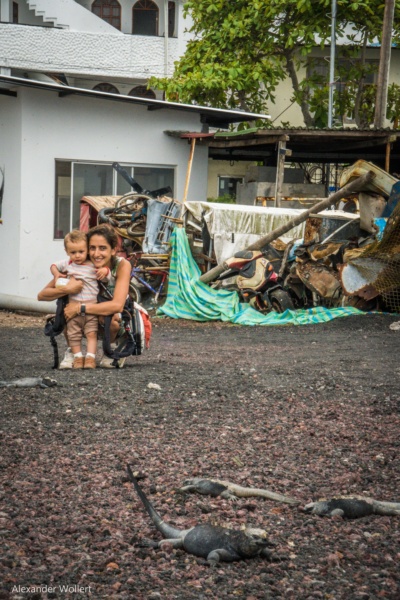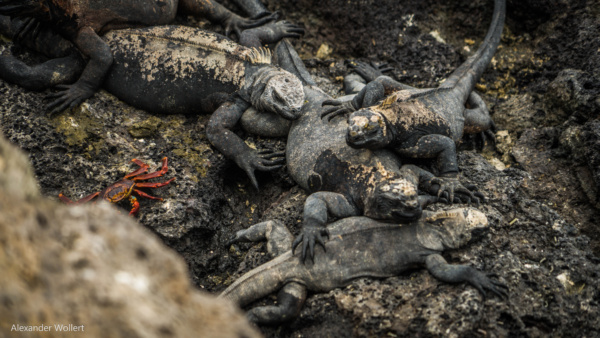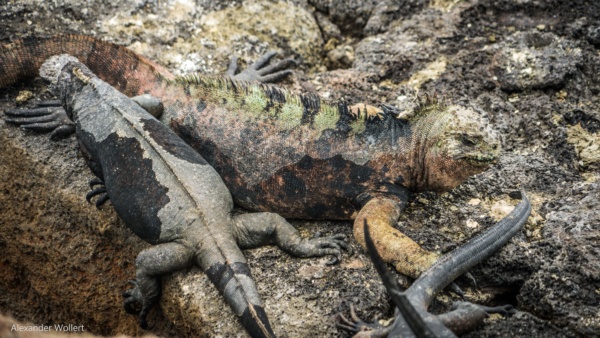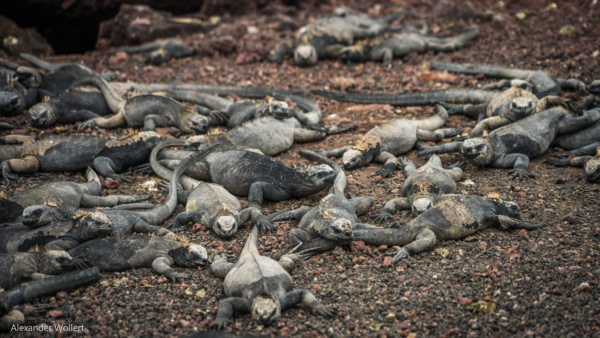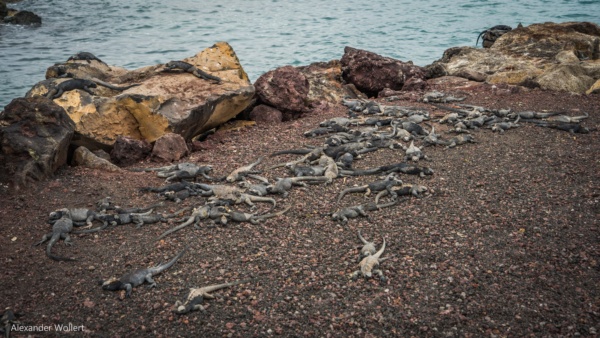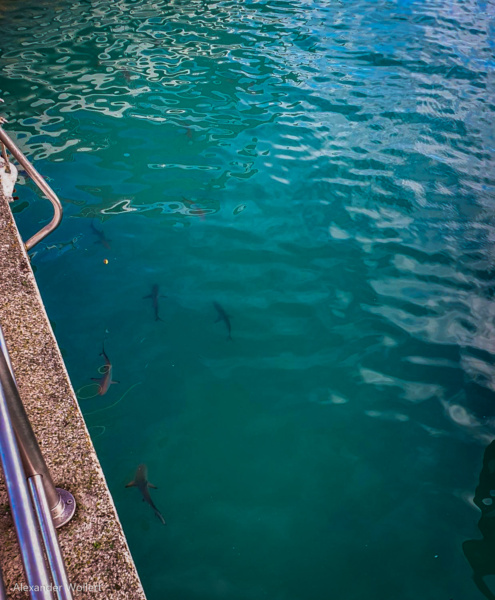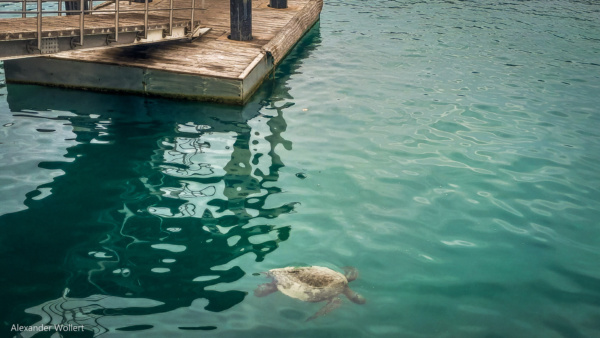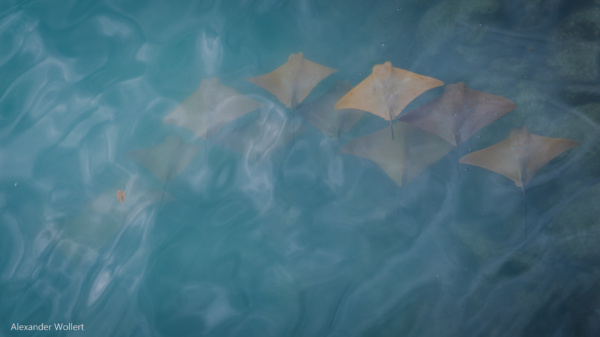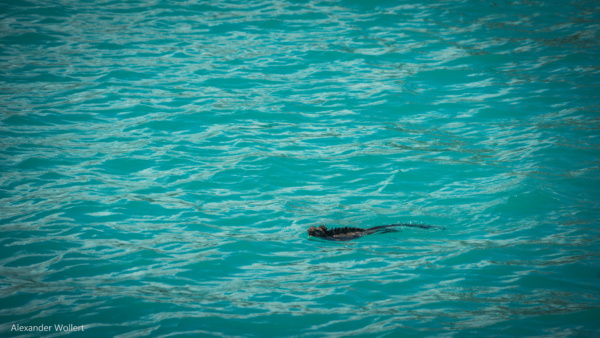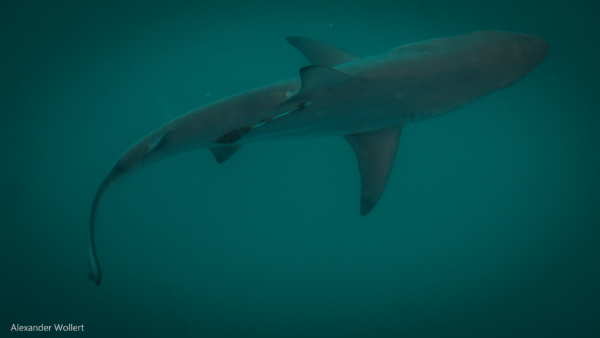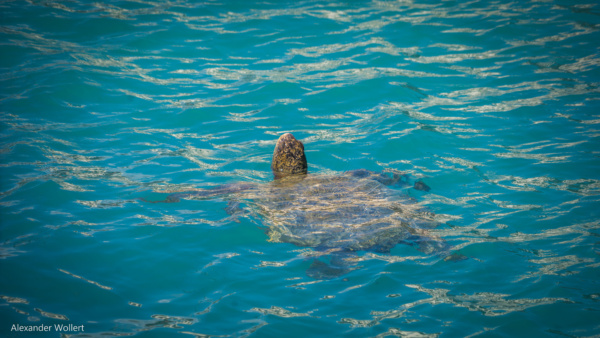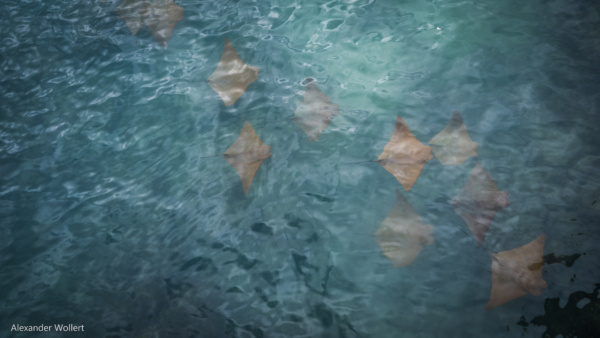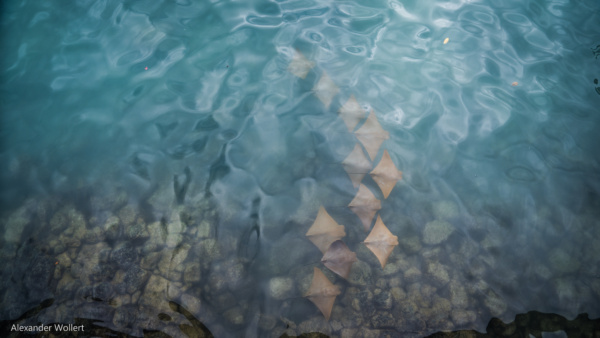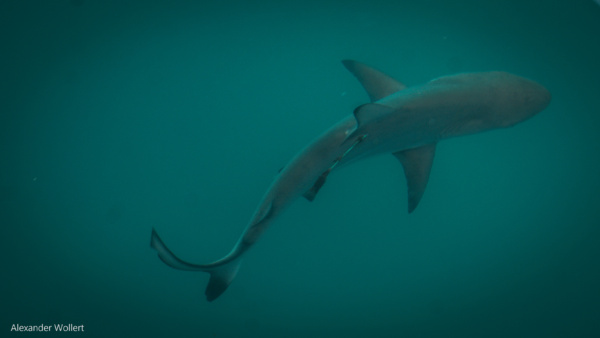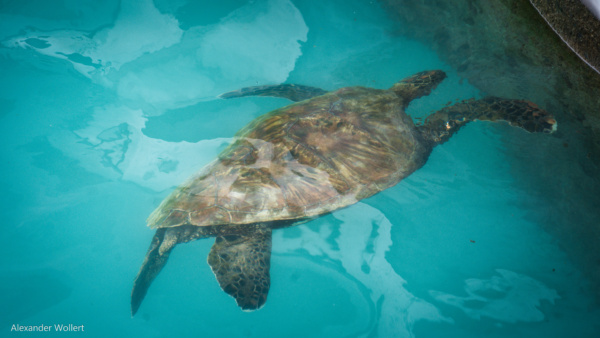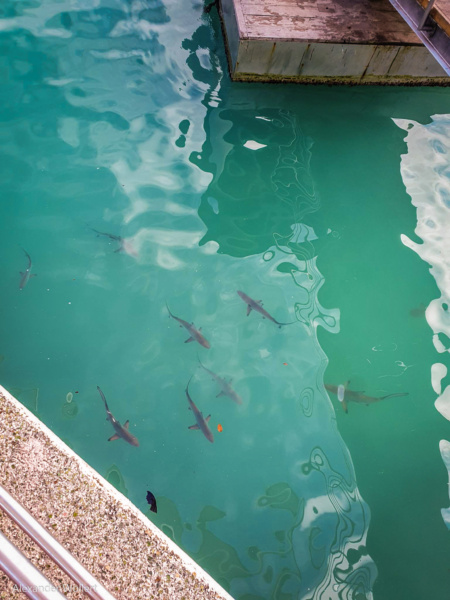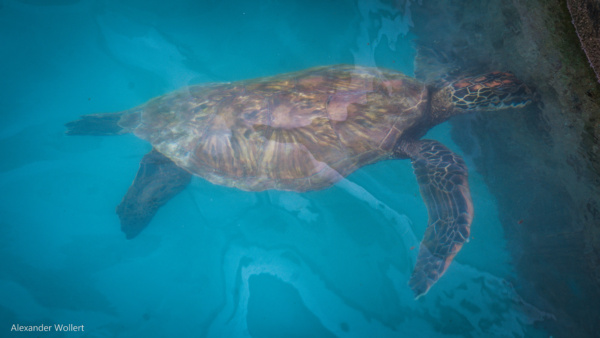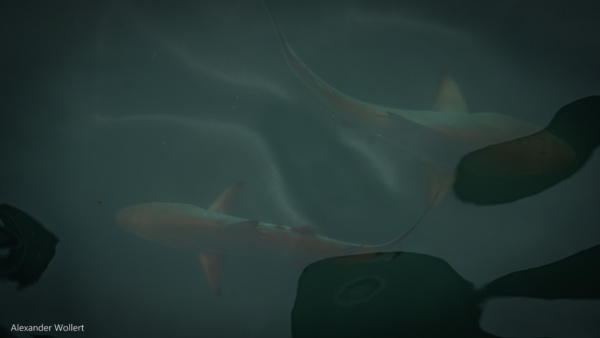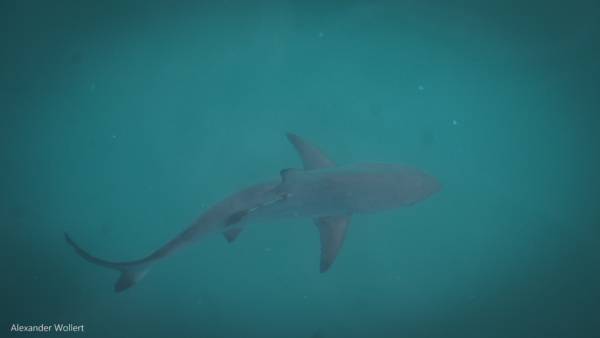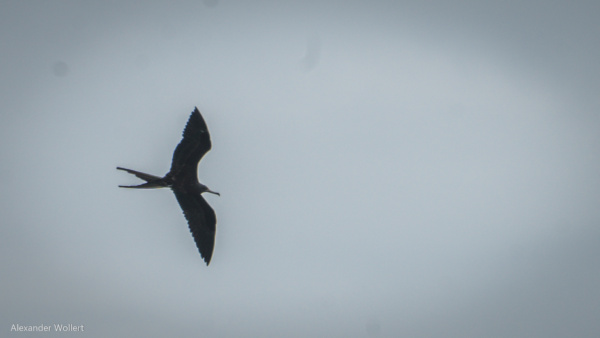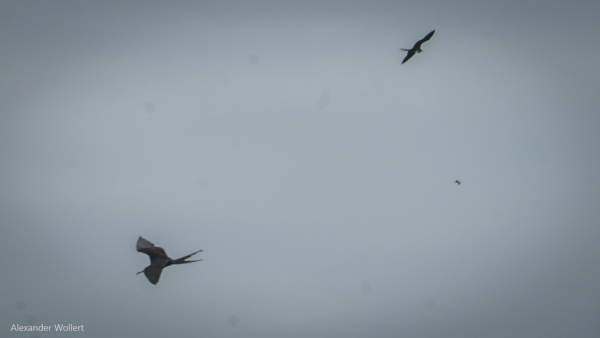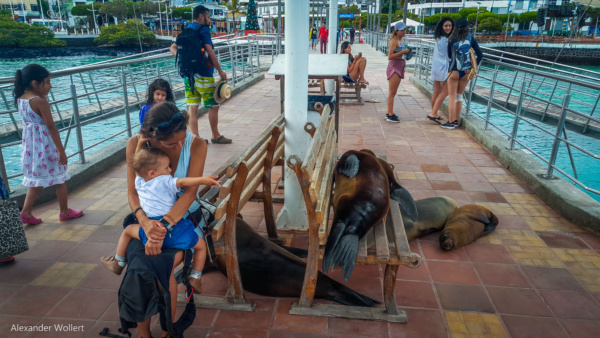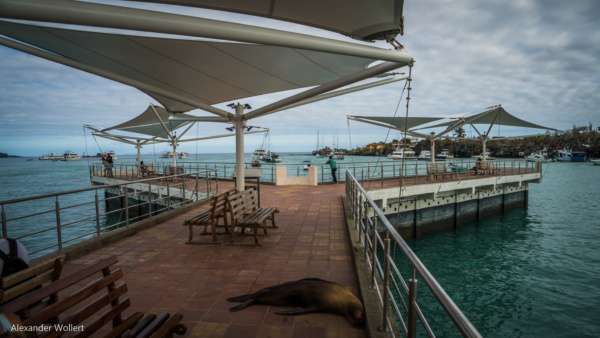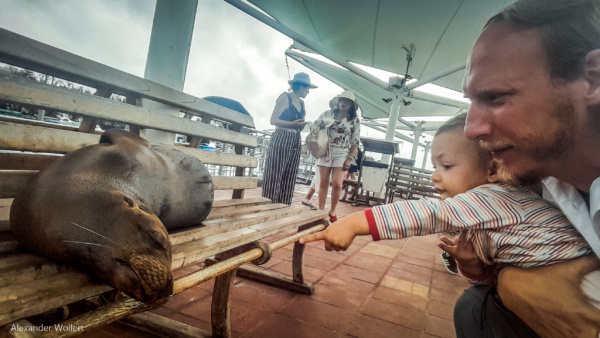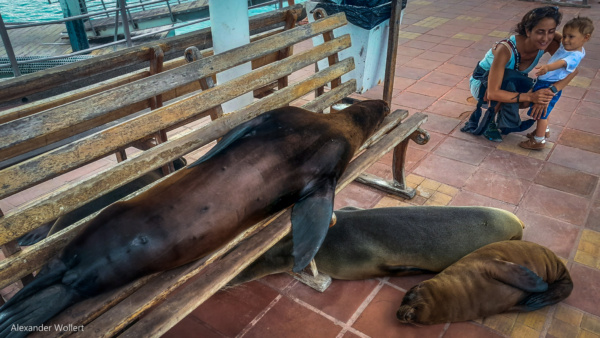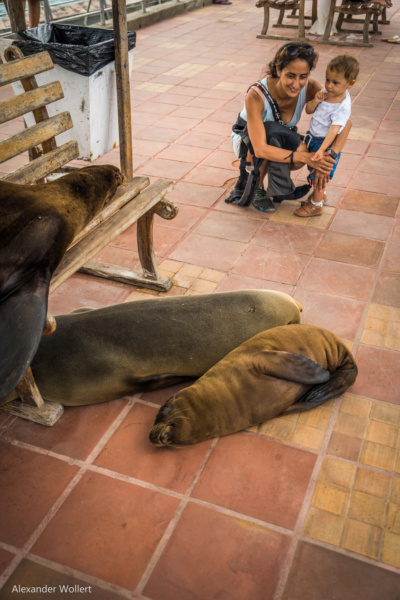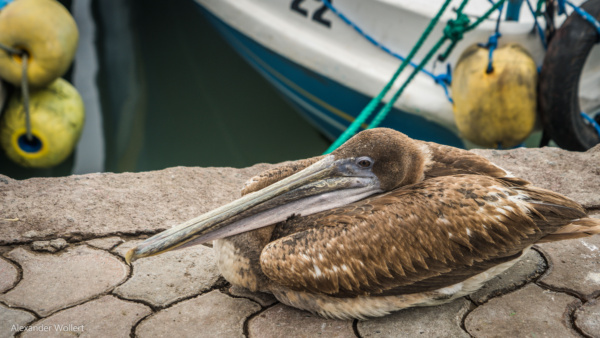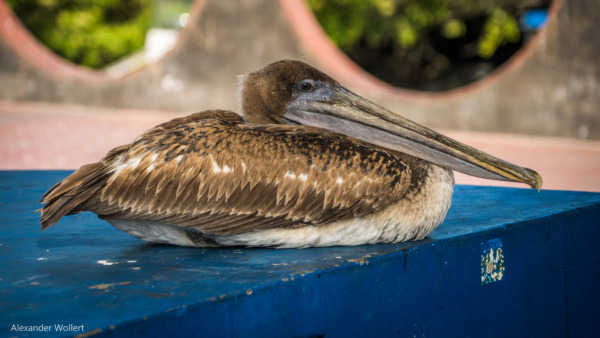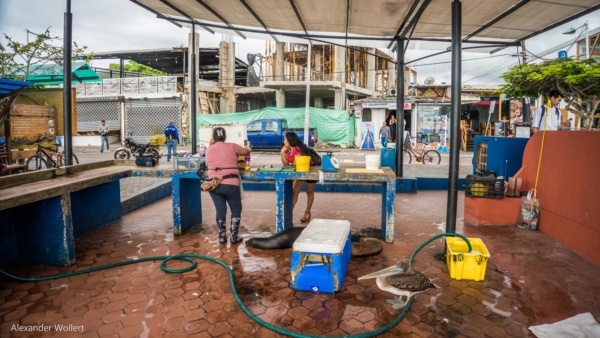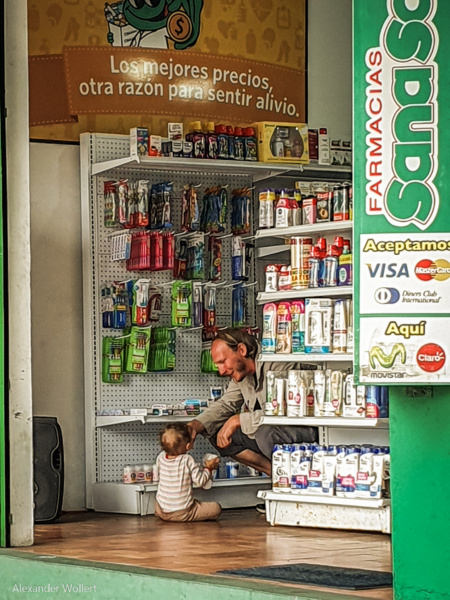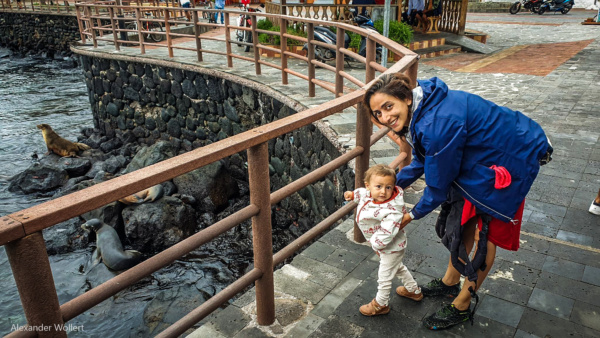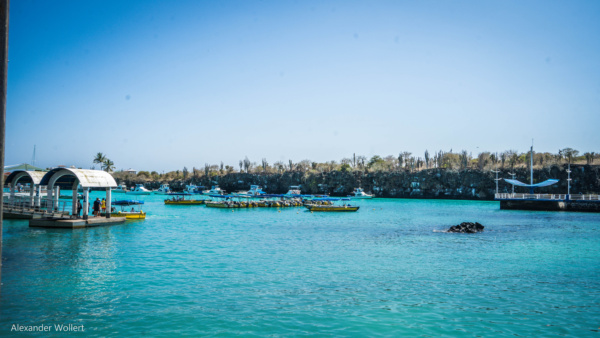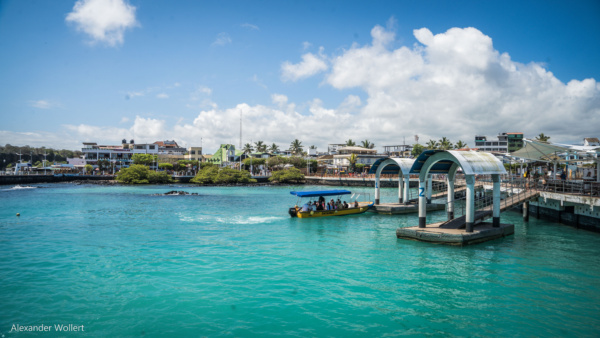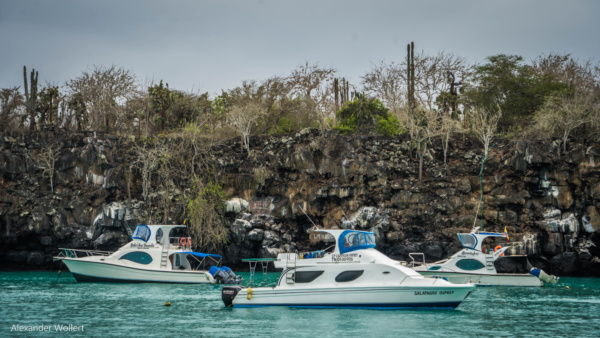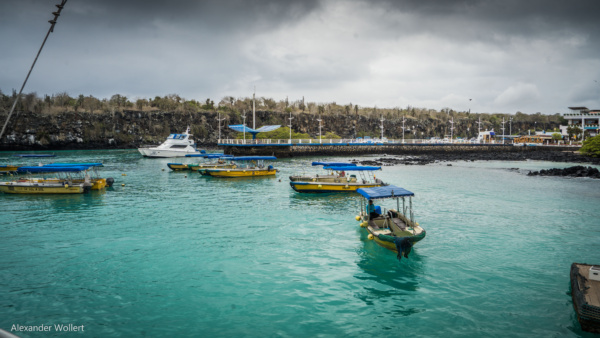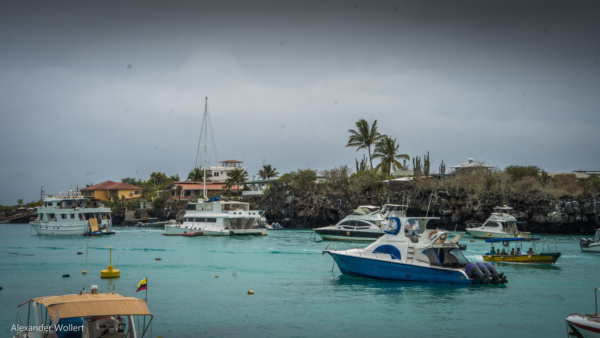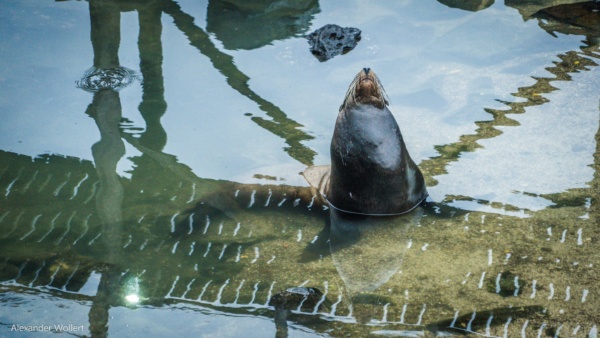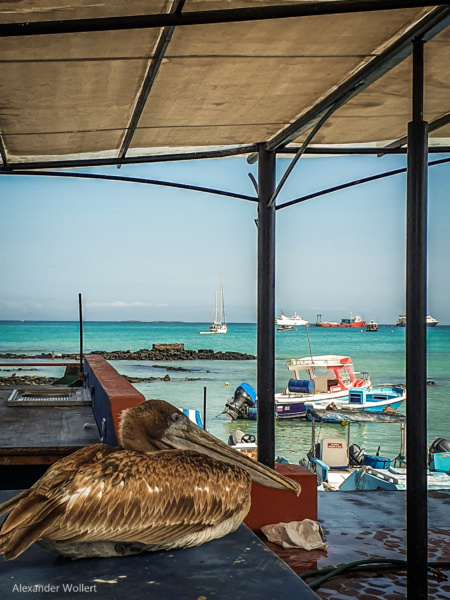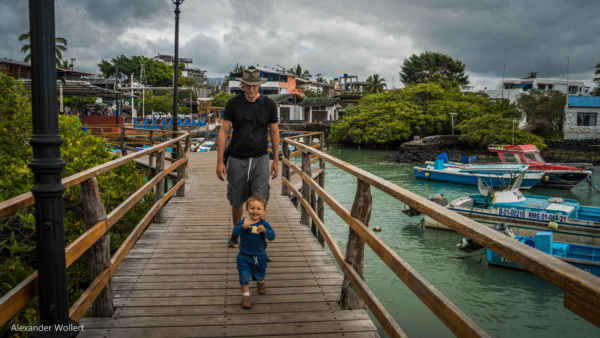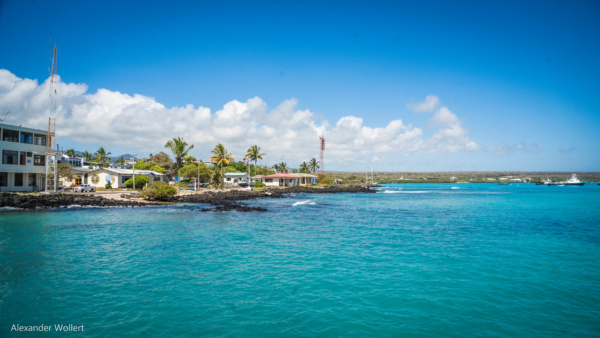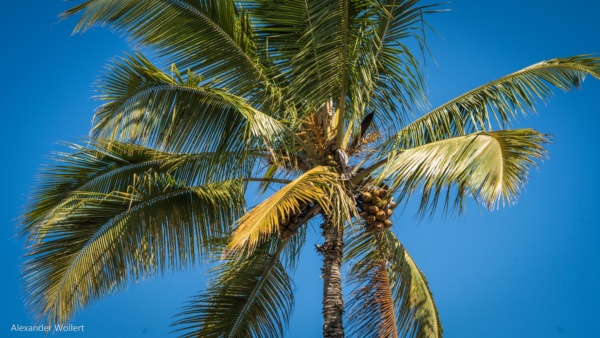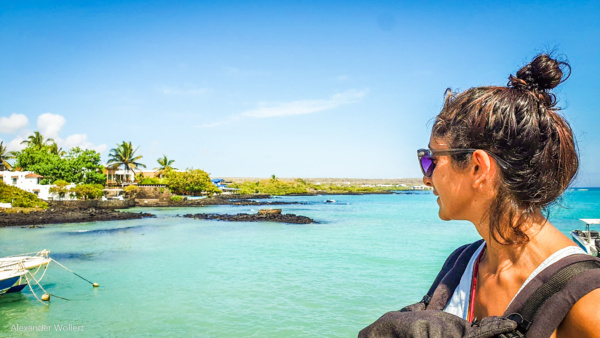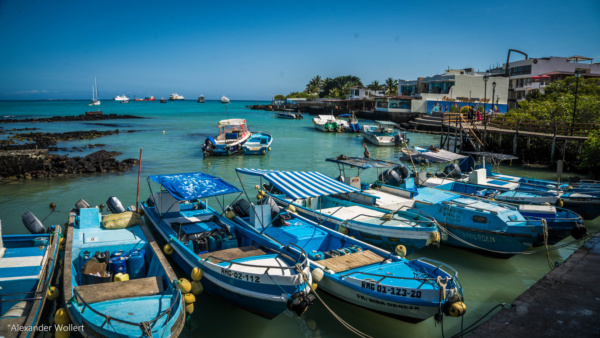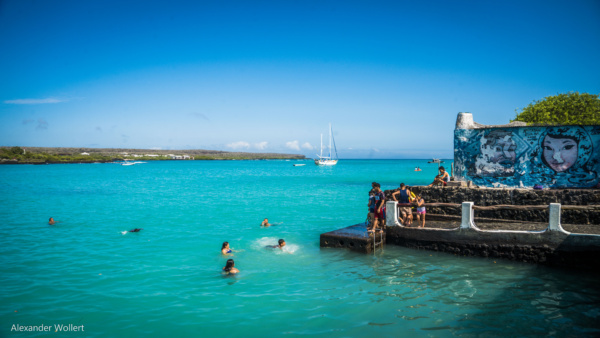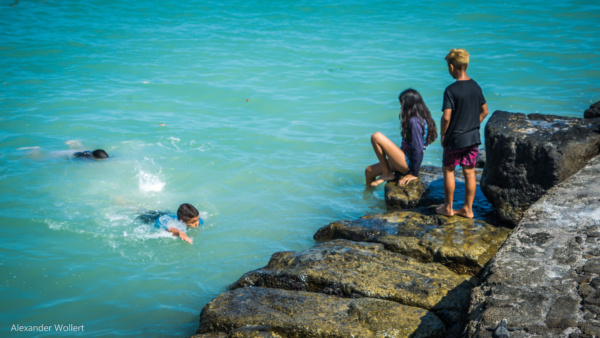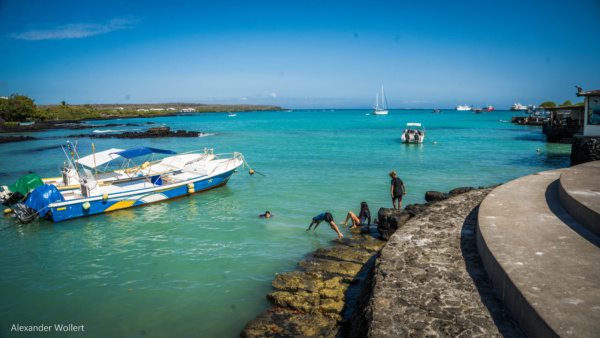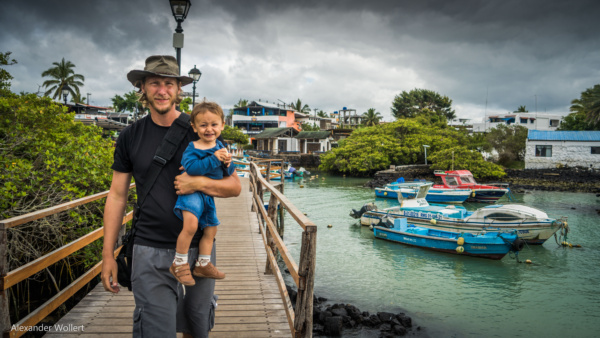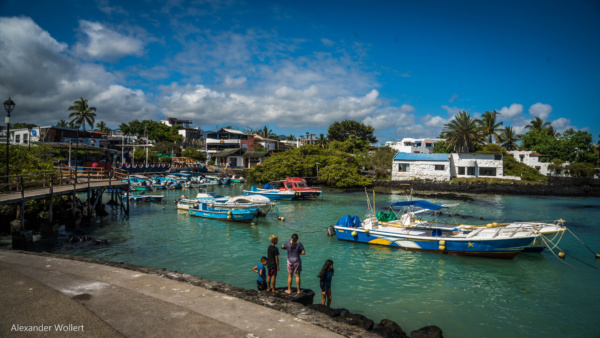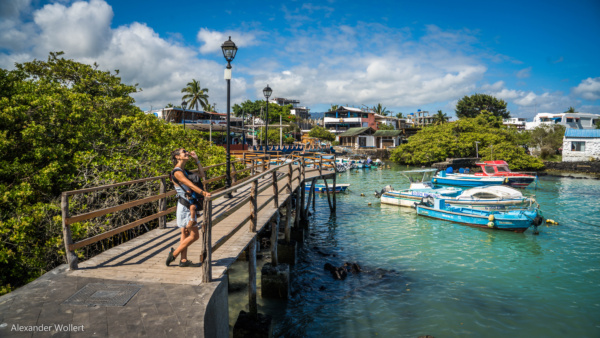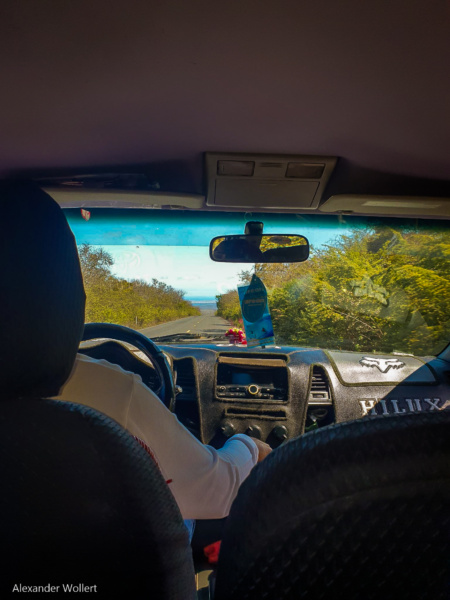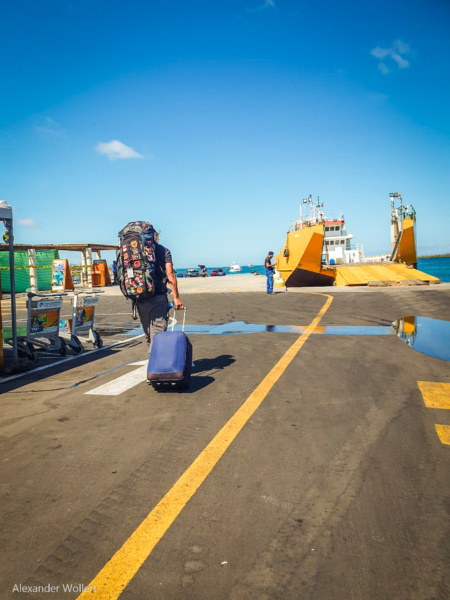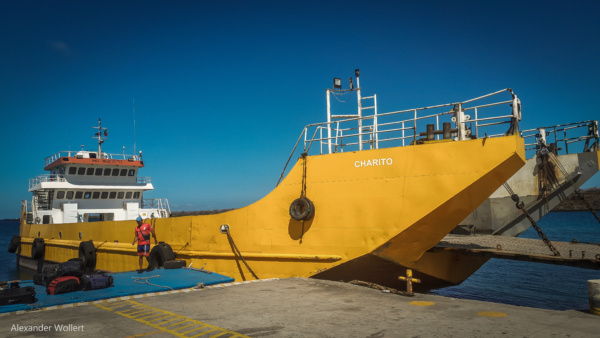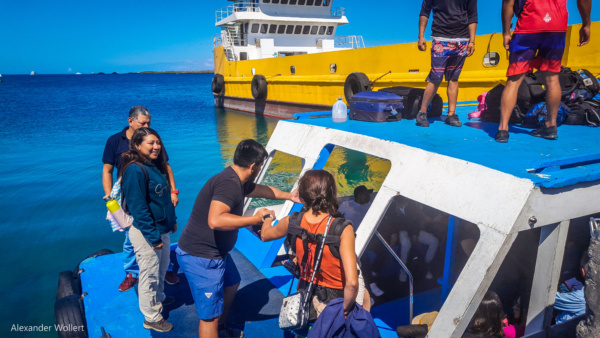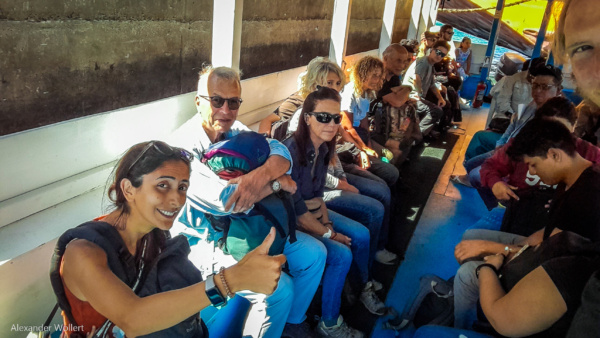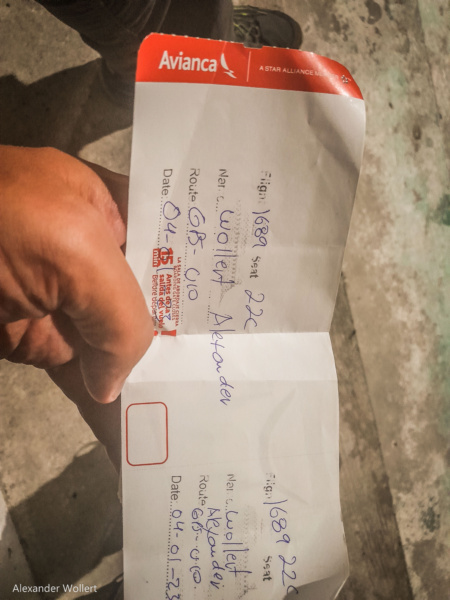Diary Entry
On the morning of the first day of 2023, we come to Santa Cruz Island, our terminus in the Galapagos Islands, in one of those tiny boats they use here as ferries. The night was short, because the whole New Year’s Eve was celebrated on Isabela.
Beer stands and a stage were set up in the park, and at midnight, people released lanterns into the night sky and burned large human figures.
Annoyingly, when entering the island, we have to pay a US dollar entrance fee again.
Tips and costs for the Galapagos Islands can be found on this page.
Puerto Ayrora is the transit point for every vacationer to the Galapagos Islands. This is where the expeditions start and where most of the hotels are located. Accommodation here is much more expensive than on other islands. However, we are also in the middle of Christmas and the New Year.
Christmas is coming from all corners. Sleighs with dolphins or Maria and Joseph with flamingos: the festival has been adapted to the local fauna.
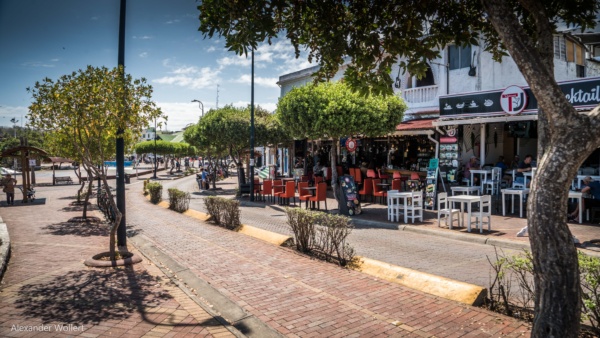
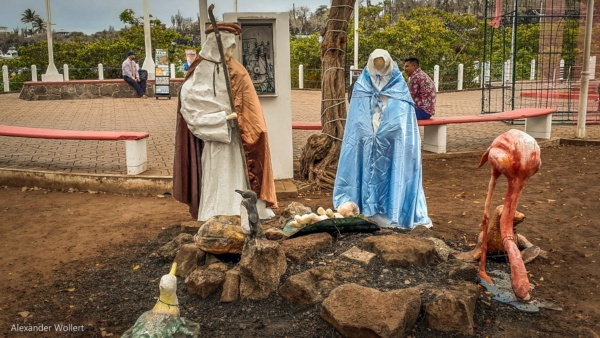
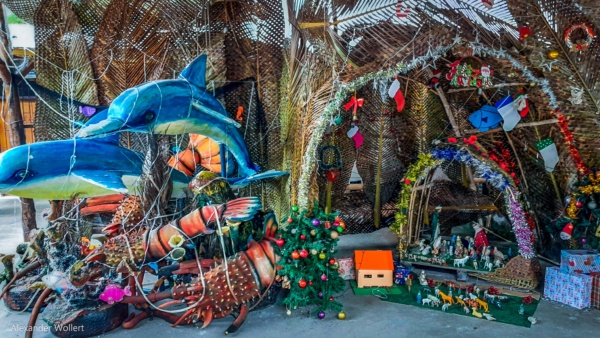
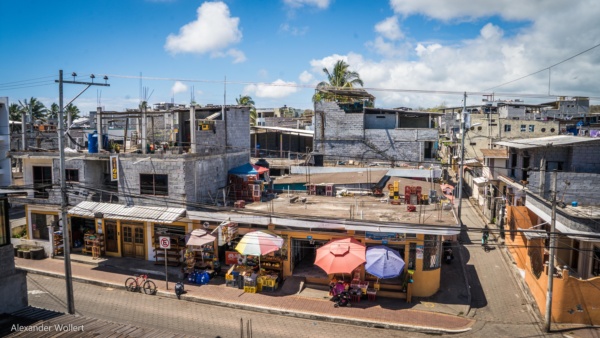
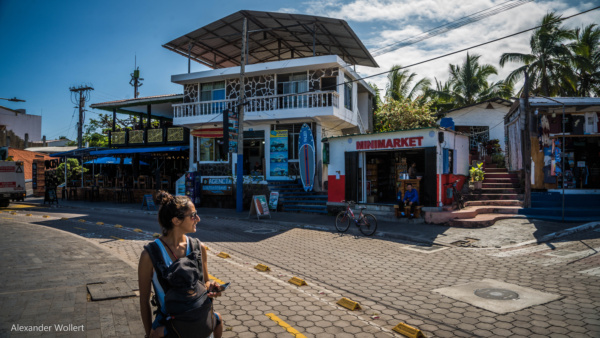
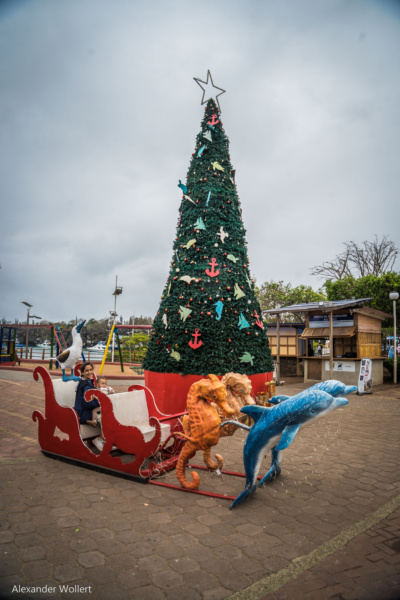

In contrast to the outward journey, the crossing is uneventful and we only spend a few days on Santa Cruz. The port city of Puerto Ayora is much larger than the cities on the other islands and all hell breaks loose here over the New Year. There is no beach that you can just walk to. With a water taxi we can get from the port relatively quickly to another beach, Playa los Alemanes. I wonder why this is a German beach, but once we get there it becomes clear to me. It is full. I’m in shock. On the small beach, people squeeze every square meter of sand and children play water polo in the shallow water. Even Leon can march far into the water until it reaches his chest.
Under a bush we see a single iguana. He has to pass a test of courage in order to endure it between all these people. The reptile shows more patience than we do, and in less than an hour we flee.
It looks similar when we set off for Bahía Tortuga, the turtle bay, the next day. People stream in droves like on a sunny and hot weekend in June near the only quarry pond in the region. On the way we turn around.
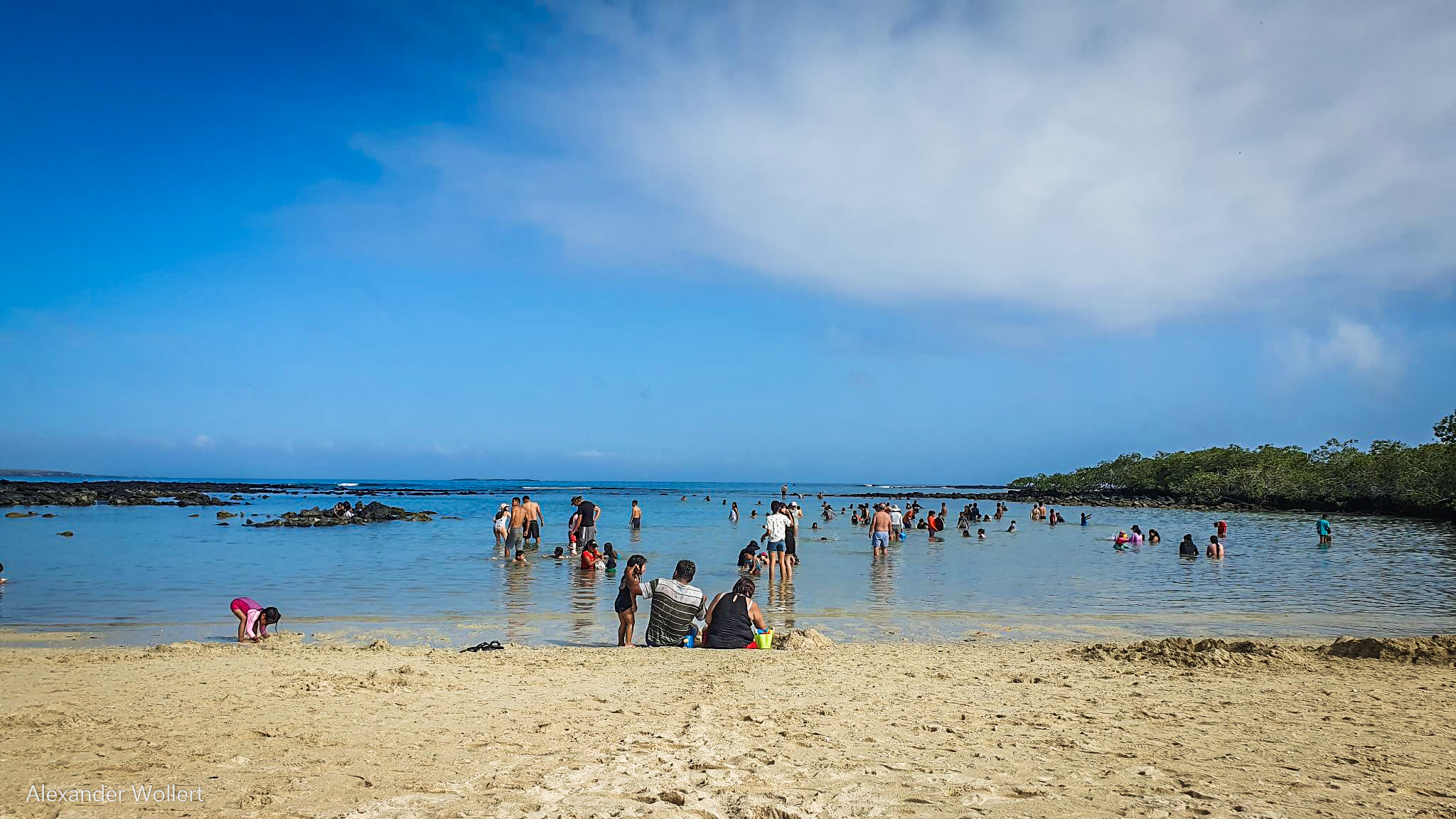
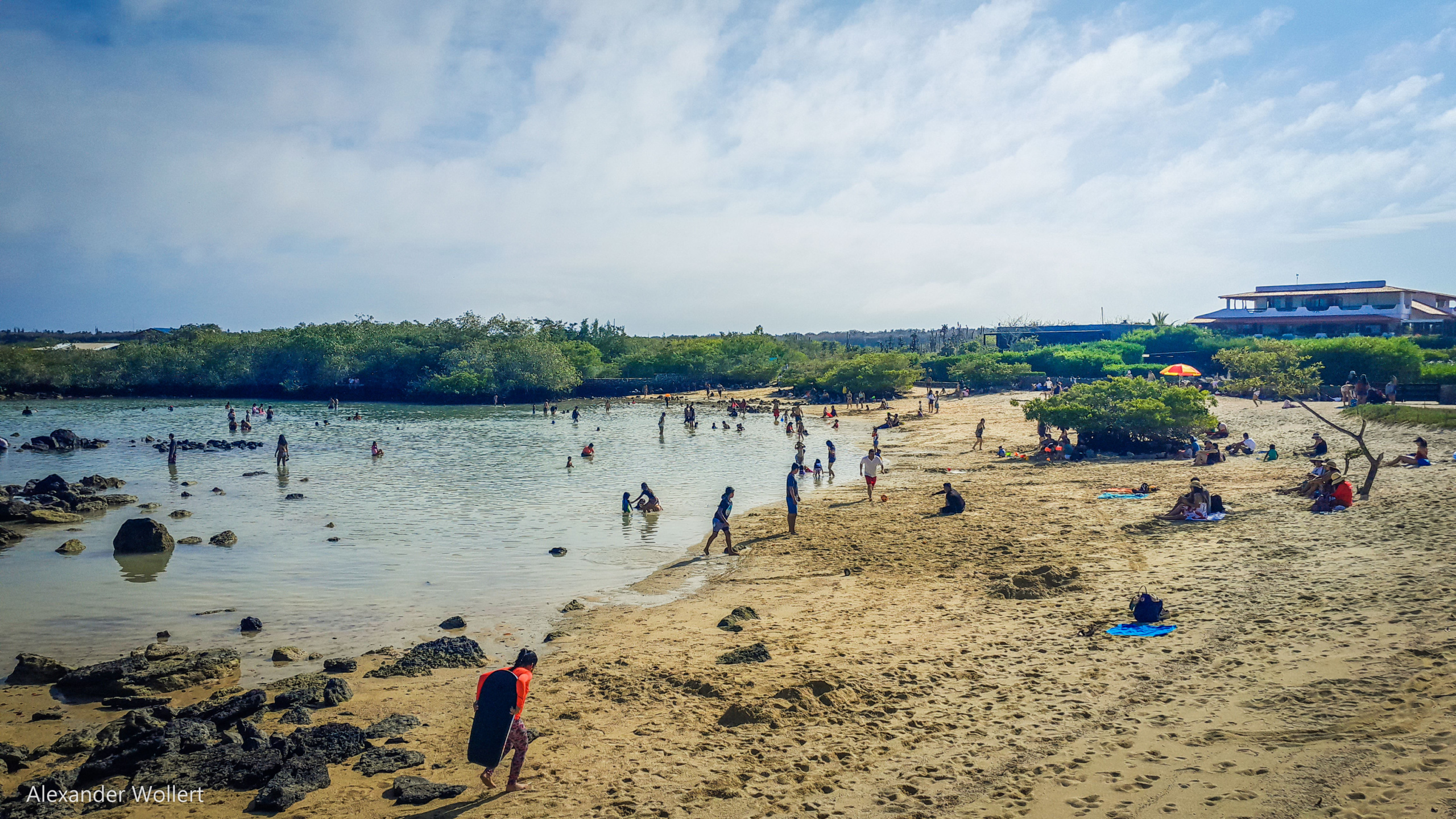
But the special thing about Puerto Ayora is the marine life that we can observe from the docks. Sea turtles swim right in the harbor and nibble off the algae on the docks. Sea lions swim around and howl. Small sharks make their tracks and even a group of eight rays floats regularly along the quay.
In the distance we see a large ray leaping out of the water, apparently chasing a fish, and the frigate birds are circling overhead.
Walk through the city and along the promenade (free)
Observe the sea creatures in the harbor basin (free)
Watch the fishermen at 7 a.m. at the harbor fighting pelicans and sea lions after returning from the catch (free)
Visit the Charles Darwin Research Center ($10 entrance fee NP)
Visit the beach next to the Darwin Station (the same $10 NP)
Rent a bike and explore inland (15 USD/person)
Visit the Playa de los Alemanes (1 USD/person water taxi)
Visit Bahia Tortuga (10 USD/person water taxi or 1h walk)
Visit one of the island’s coffee plantations (bike/taxi)
Visit one of the inland caves (bike/taxi)
Visit the secluded Playa de Garrapatero (Taxi)
To Do’s on Santa Cruz
Pelicans swim on the water and snap at fish, which disappear into their huge beaks. And iguanas meander through the many small fishing boats like little leviathans.
We spend most of the time on the island at the harbor and look fascinated into the turquoise water and observe what’s going on there like in a large aquarium.
Then the end of our time in the Galapagos Islands has been reached. However, the airport is on Baltra Island, which is off Santa Cruz Island. Taking a taxi, we have to cross Santa Cruz Island to get there.
It takes us over the mountains, which are made up of green tropical jungle on one side and meadows and trees full of lichen on the other, between which large Galapagos tortoises graze like dinosaurs.
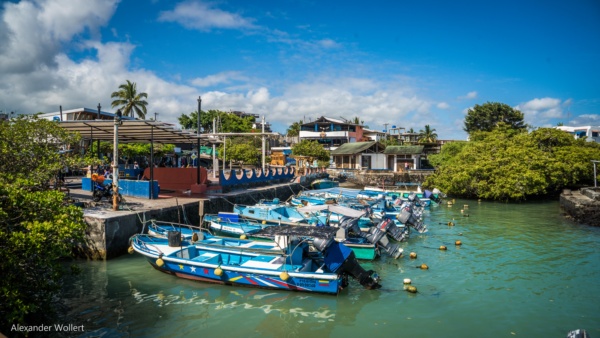

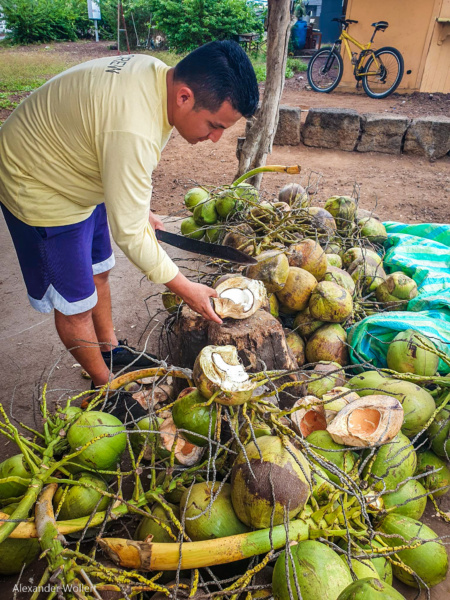

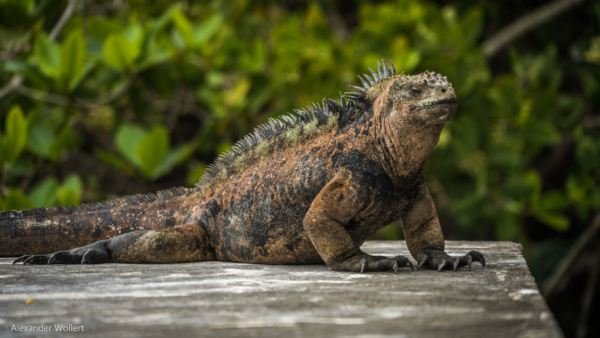
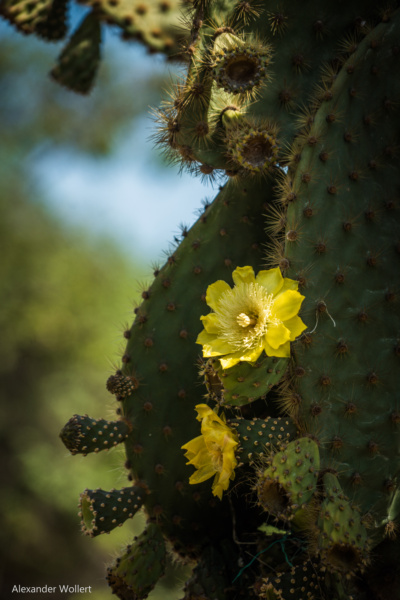
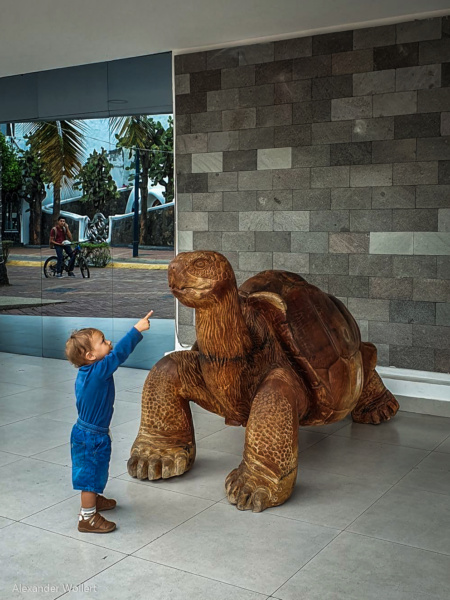
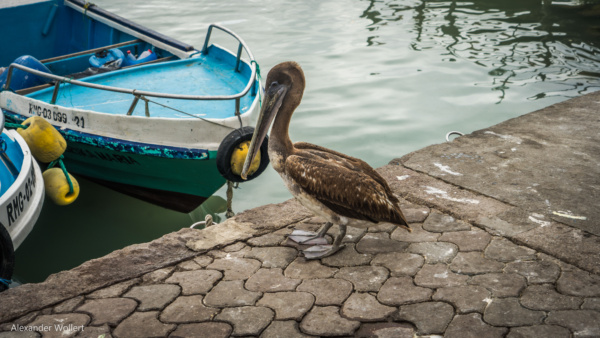
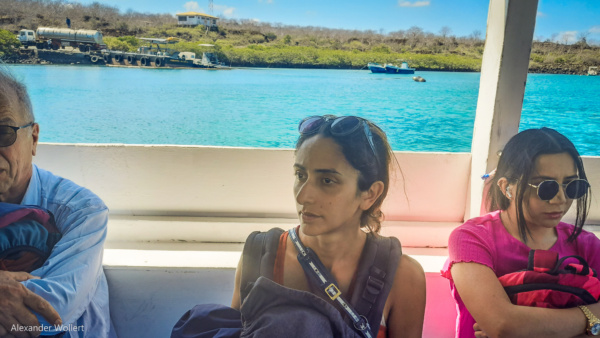
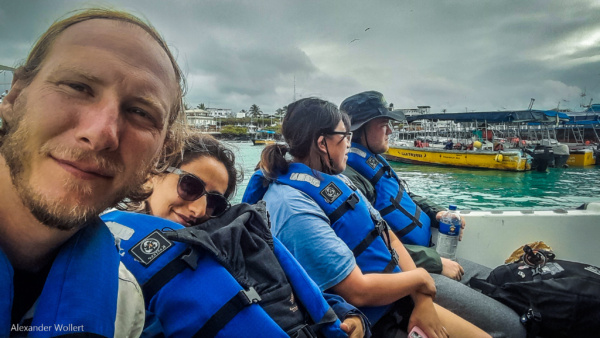
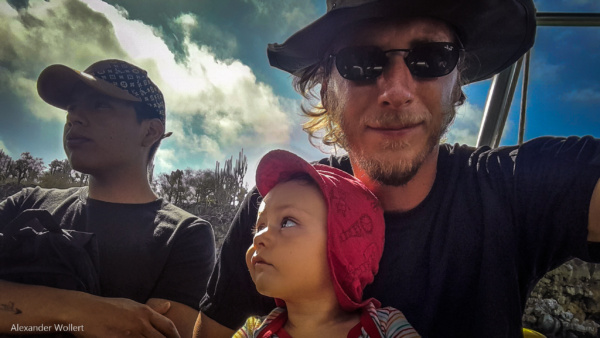
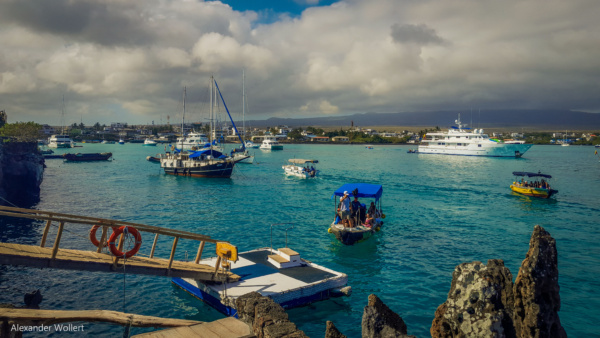
We have to take a ferry to the nearby island of Baltra and take a bus to the terminal from there. Even there, life is thriving and iguanas parade through the airport lobby.
Although we spent a whopping three and a half weeks in the Galapagos, we are still fascinated by this paradise of wildlife, which is not yet afraid of humans, and it is difficult to say goodbye. Now it’s back to Quito and on the journey over the pass.

